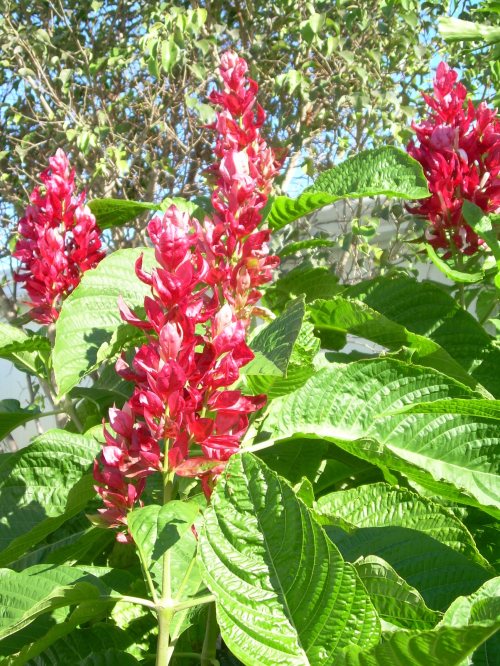
A recent visit to Mounts Botanical Garden in West Palm Beach introduced me to a few “new” plants. Because I visited on a Monday (the garden’s Nursery Guild plant sales section are open from 10 a.m. to 1 p.m. Mondays and Fridays) I was able to buy my one of my favorites seen there, caricature plant (Graptophyllum dictum), often commonly called Jamaican croton. I especially like that this colorful tropical is good for the shade where crotons ordinarily would struggle.
This plant also does well in full sun. In both situations it lends a delicate dance of color and contrast with splashes of pink on green with deeper-colored stems. There are other cultivars with slightly different shades. This tropical specimen is a native of New Guinea and is in the family: Acanthaceae. Caricature plant is recommended for Zones 10-11, although with research I found that roots can survive down to 25 degrees. And it blooms with four-inch long red or purple inflorescences on this evergreen shrub which grows two to eight- feet tall, with a two to five-foot spread. It displays glossy, leathery, elliptic leaves, up to six inches long. Keep soil uniformly moist. As an extra bonus, softwood stem cuttings will root in water. A good thing, because this is another of those plants that you will want to share with your gardening friends.
.
